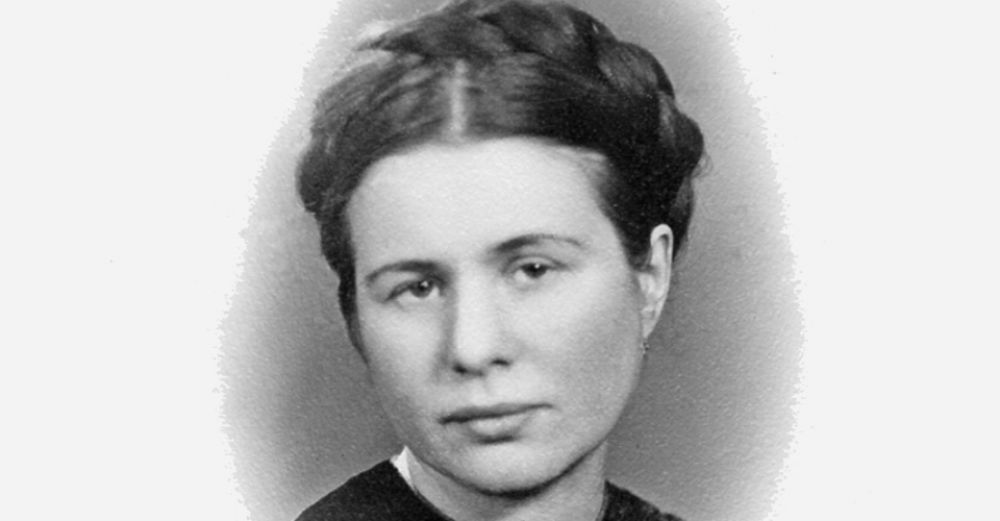- News
- Events
- Oneg Shabbat
- Collections
- Research
- Exhibitions
- Education
- Publishing Department
- Genealogy
- About the Institute
- Bookstore


Irena Stanisława Sendler, née Krzyżanowska, was born on 15 February 1910 in Warsaw.
Irena’s father, Stanisław Krzyżanowski, was a doctor. He worked at the Holy Spirit Hospital, and later ran a private practice in Otwock. He died of typhus in 1917. In 1920, Irena’s mother, Janina Krzyżanowska, moved with daughter to Tarczyn, and later to Piotrków Trybunalski, where Irena began her education at the Helena Trzcińska Gymnasium.
After her high school exams, she moved to Warsaw to study law at the University of Warsaw, which she gave up after two years in favour of the Humanities Department. She began her teacher’s training at the „Różyczka” orphanage in Wawer – a subsidiary of Janusz Korczak’s House of Orphans. She graduated in June 1939 but didn’t apply for her MA exams.
Even though she began her work in social care, in the Mother and Child Aid Section at the Citizens’ Social Aid Committee, and during her studies she joined a group of Christian students who displayed solidarity with their Jewish friends and sat with them in „ghetto benches”, which caused persecution from students who belonged to the National radical Camp and led to her suspension as a student – the most famous episode of her life was related to the Nazi German occupation period.
During the occupation, she worked at the Social Welfare Department of the Warsaw City Council. In October 1943, the Council For Aid To Jews „Żegota” appointed Irena Sendler, nom de guerre „Jolanta”, to the position of the head of the children’s department.
One of Żegota’s most important tasks was to rescue Jewish children. Even before the Council For Aid To Jews was established, Irena Sendler, as an employee of the Social Welfare Department of the Warsaw City Council, managed to obtain passes to the ghetto for herself and several colleagues (including Irena Schultz). Under the guise of sanitary control and pest control, they carried into the ghetto money, food, medication and typhus vaccine to help the Jewish community.
Thanks to her previous experience in conspiracy, Irena Sendler perfectly fit into the role of the head of the Children’s Department. Together with many liaisons, such as Stanisława Bussold, Jadwiga Deneko, Wanda Drozdowska-Rogowiczowa, Izabela Kuczkowska, Zofia Patecka, Jadwiga Piotrowska and Wincenty Ferster, they managed to save several hundred children. The exact number remains unknown.
Children rescued from the ghetto were located in Polish families or in orphanages ran by nuns in Warsaw and outside the city – in Anin, Chotomów, Henryków, Płudy and Turkowice. The youngest inhabitants of the Warsaw Ghetto were rescued in various ways. Very small children (sometimes babies) were given sedatives and transported in bags, boxes, wooden cases, even in a sanitary ambulance. Older children were leaving the ghetto often through the building of the courts at Leszno street – the main entrance at Leszno street led to the ghetto, and the entrance from Ogrodowa street to the „Aryan” side. Often the only way of escape led through sewers and basements of houses located close to the ghetto walls. Much older kids were able to escape with the work brigades. Early in the morning, children mixed in with the crowd of adults – manual workers employed on the „Aryan side”. Liaisons took care of them as soon as they passed the walls. All children, regardless of age, were directed first to one of ten emergency units, where they underwent a process of adjusting to new conditions (lasting from several days to several weeks). During that period, new identity documents were prepared for them (usually documents of deceased Polish children).
When the Warsaw Uprising broke out, she lived in the Mokotów district. She participated in establishing the hospital at Okęcie (later the Red Cross Hospital no. 2) in which she worked as a nurse and an acting ward sister.
In March 1945, she was employed as the deputy director (later director) of the Social Care Department of the City of Warsaw, where she was working until 1950. between 1950–1952, she was the head of the Care Department at the Society of the Disabled, later – an instructor at the Heatth and Social Care Department of the Presidium of the National Council of the City of Warsaw (1953–1954), deputy director at the State School for Midwives (1954–1955) and deputy director at the State School for Lab Technicians (1955–1958). Between 1958–1962, she managed the Department of Medical High Schools at the Ministry of Health and Social Care.
For her aid to Jewish children during the German occupation, thus risking the life of herself and her family, Irena Sendler was awarded with the medal and title of Righteous Among The Nations in 1965. She planted her tree in Yad Vashem on 6 May 1983. In 1991, she received the honorary citizenship of Israel.
Irena Sendlerowa received following awards: the Order of the While Eagle, the Order of Smile, Ecce Homo Order, the Commander’s Cross with a star of the Order of Polonia Restituta, Medal Of Merit For Healthcare, the Golden Cross of Merit.
Irena Sendlerowa died on 12 May 2008 in Warsaw. She was buried at the Powązki Cemetery in Warsaw.